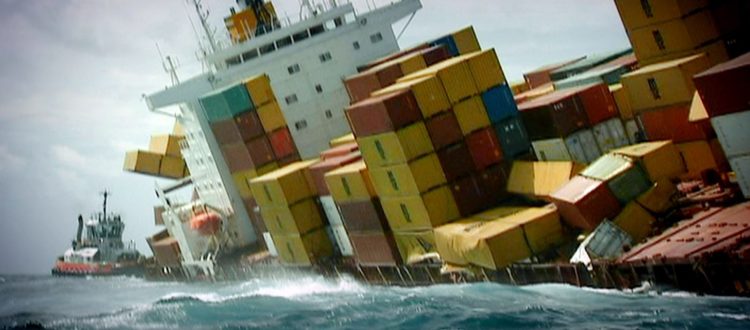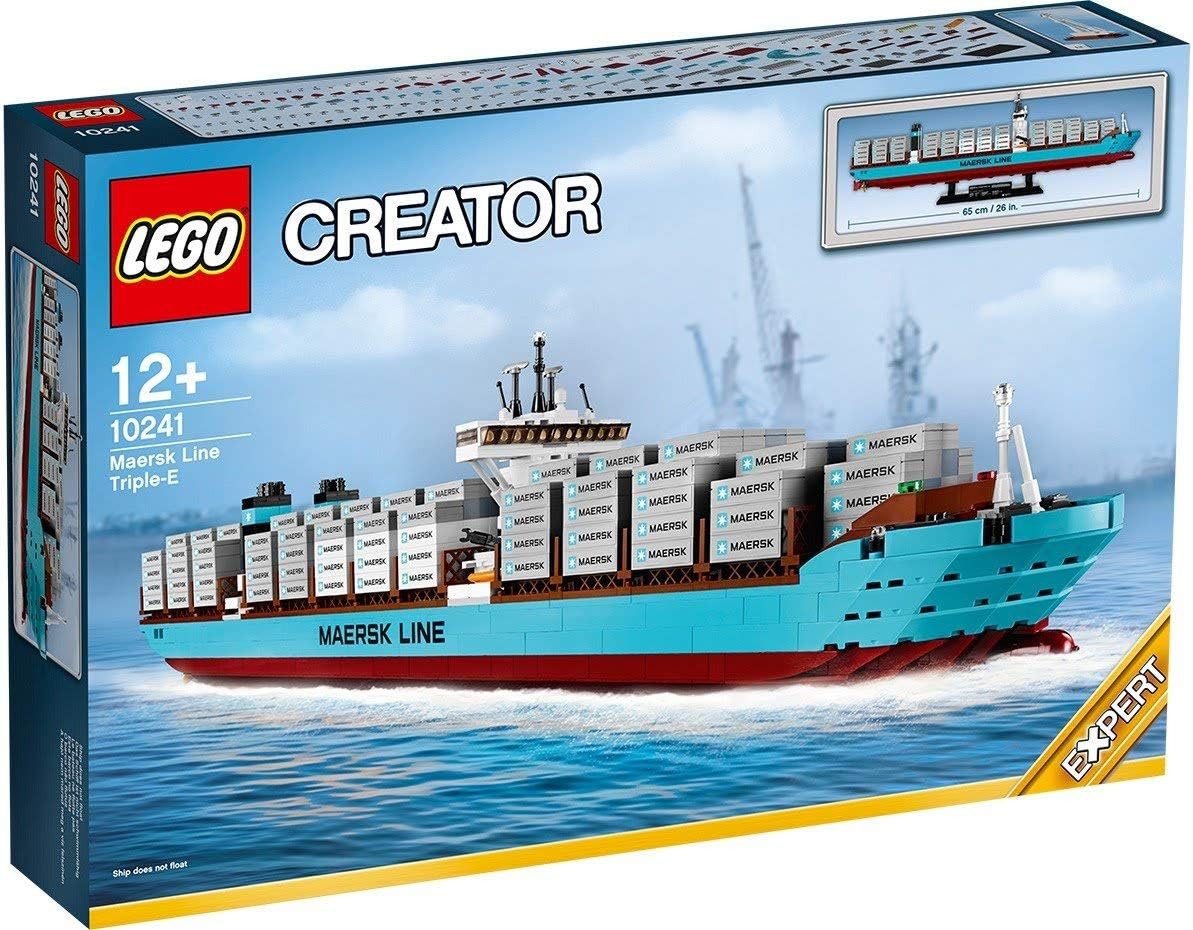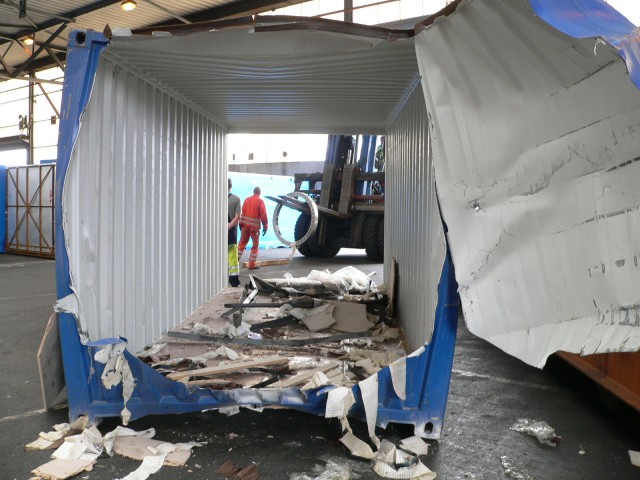Why and how many of Cargo containers are lost at sea?
About 10 days ago, a cargo ship caught in rough swells off the Brazilian coast lost 45 shipping containers.
Video on social media shows fishermen in small boats scavenging for whatever they could find from the containers, some of which apparently burst when they hit the water, according to a BBC report.
Among the loot: air-conditioning units, bicycles, clothing and hospital equipment.
Such incidents, while relatively rare, do happen now and then.
Nearly two years ago, in October 2015, all 33 crew members, along with 391 containers and some trucks and trailers, were lost when the El Faro met Hurricane Joaquin in the Bermuda Triangle.
Two months later, a ship en route from Oakland, Calif., to Seattle lost a dozen 40-foot containers just outside of the Golden Gate Bridge. Most were empty, but some carried Styrofoam insulation and plastic crates that rolled up onto beaches, according to www.sfgate.com.
When millions of Lego pieces lost in a 1997 container-ship incident began washing up on English beaches, the conventional wisdom was that about 10,000 containers a year fall overboard , a figure often cited in reports about such losses over the years.
“It’s an issue that’s really flown under the radar,” said John Kaltenstein, an Arizona-based senior policy analyst with Friends of the Earth. “This is an issue that hasn’t been tracked properly, and I think it’s one of those that could use more scrutiny.”
As container ships continue to grow in size – the Port of Virginia is about to welcome its first vessel able to carry 14,000 containers measured in standard, 20-foot units – it’s hard not to think about the unthinkable.
Six years ago, the World Shipping Council, a Washington-based trade group whose members account for about 80 percent of global ocean-carrier capacity, got on the case.
Beginning with a survey in 2011, the group asked its members – which include major carriers such as Maersk Line, Mediterranean Shipping Co. and CMA CGM – to report the number of containers lost overboard for the preceding three years.
It found that over the total nine-year period covered in its surveys, from 2008 through 2016, an average of 568 containers were lost at sea each year.
That figure, however, doesn’t include catastrophic events, which the council defines as those that claim 50 or more containers. Factor them in, and the average rises to 1,582 a year.
Nearly two-thirds of the containers lost in that time period were linked to catastrophic accidents, the council states. Among them: the complete loss of the MOL Comfort in 2013 in the Indian Ocean, with 4,293 containers, the worst container-ship loss to date; and the grounding of the M/V Rena off New Zealand, when roughly 900 containers were lost.
Last year, ocean carriers moved about 130 million containers packed with cargo, with an estimated value of more than $4 trillion, the council noted, and containers lost overboard represent about one-thousandth of 1 percent of that total.
Maersk Line, the biggest ocean carrier in the world, moved 13.2 million full containers last year, of which 23 were lost overboard, Katherine Mosquera, a spokeswoman, said in an email.
Among an array of things the company is doing to prevent future losses: an “increased focus on route planning, especially in poor weather conditions.”
Kaltenstein said that while he applauds the industry’s efforts to better account for container losses, he has some questions.
Ideally, the statistics provided would offer a fuller picture of what’s going on and where, he said: “What we’re seeing is really composite data,” with no information about the date and location of the losses, the number of containers lost per incident or their contents, or which company was involved, among other things.
Kaltenstein also noted that the World Shipping Council had to extrapolate from its members’ data to get an estimate of the losses from the 20 percent of ocean-carrier capacity the group doesn’t represent, some of which may be operated by carriers that don’t have the same standards as the council’s membership.
Even if its average figure of more than 1,500 containers lost per year is on target, he noted, over the course of a decade that’s still 15,000 containers.
In late February 2004, the Med Taipei, en route to the Port of Los Angeles, lost 24 containers – 15 of them in the Monterey Bay National Marine Sanctuary south of San Francisco.
In June 2004, scientists with the Monterey Bay Aquarium Research Institute found one of them – holding 1,159 steel-belted car tires – resting upside down on the seafloor, at a depth of about 4,200 feet.
Using proceeds from a resulting legal settlement, the marine sanctuary has turned the container into a kind of science experiment, monitoring the impact site to track decomposition rates along with “potential impacts over time of steel containers and contents, as well as the recovery rates of natural habitats in the deep seafloor,” according to the sanctuary’s website.
“Our lost container is really the only shipping container in the world that’s being studied in the deep over time,” said Andrew DeVogelaere, research director for the Monterey Bay National Marine Sanctuary.
He questions the accuracy of the often-quoted figure of 10,000 containers lost a year, but he also wonders whether surveying companies that have an interest in showing lower numbers is the best way of getting to the truth.
“I don’t know that anybody knows what the true number is, but I’m glad that people are working on firming that up,” DeVogelaere said.
He knows this much, though: “When they are lost, they’ll sit on the sea floor for hundreds of years. It’s a big deal.”
He terms lost containers another form of marine debris and says that the impact on organisms and communities in the deep sea is still being identified: “We don’t even know what the names of many of the deep-sea organisms are or their role in the ocean ecosystem.”
Michael McDaniel is a maritime attorney and principal of a Los Angeles-based law firm whose clients have been involved in such disasters as the El Faro, the MOL Comfort and the M/V Rena.
One of the questions commonly raised at his firm is how many lost-container incidents go unreported. Among other reasons, shipping companies want to avoid the regulatory entanglements to which they can lead, he said.
“Some incidents just aren’t reported, you know, especially in some parts of the world,” he said.
Curtis Ebbesmeyer is perhaps the granddaddy of those with a keen interest in lost-container incidents worldwide.
He has tracked them for decades and oversees a global network of beachcombers.
A Seattle-based oceanographer with 50 years of experience, he remembers when thousands of Nike athletic shoes began to wash up on Pacific Northwest beaches about 25 years ago.
“Each Nike shoe has a serial number, and Nike actually cooperated with me, through their marine department, to figure out what ship it came from,” Ebbesmeyer said. “That’s a very unusual thing.”
Typically, when container debris washes up on a beach, there’s no way to identify the source, he said.
Ebbesmeyer takes credit for first throwing out the 10,000 figure decades ago and notes that the World Shipping Council survey results cover a period that began less than 10 years ago.
If there were a way to track the data back to the 1980s and ’90s, he believes his estimate would stand up.
In any case, the larger issue isn’t really the number of containers, he argues, so much as what’s in them and finding a way to hold accountable those responsible for lost goods that end up on shorelines worldwide.
“It’s almost like, if it goes overboard, it’s out of sight, out of mind,” Ebbesmeyer said. “We have massive numbers of people cleaning up beaches, but they can’t tell where it comes from.”
A single container can carry 5 million plastic shopping bags, which if lost at sea could itself become a catastrophe, Ebbesmeyer said.
“It’s a very deep and dark topic,” he said. “But I must compliment the industry; they’re doing better and better.”
Source: The Virginian Pilot





